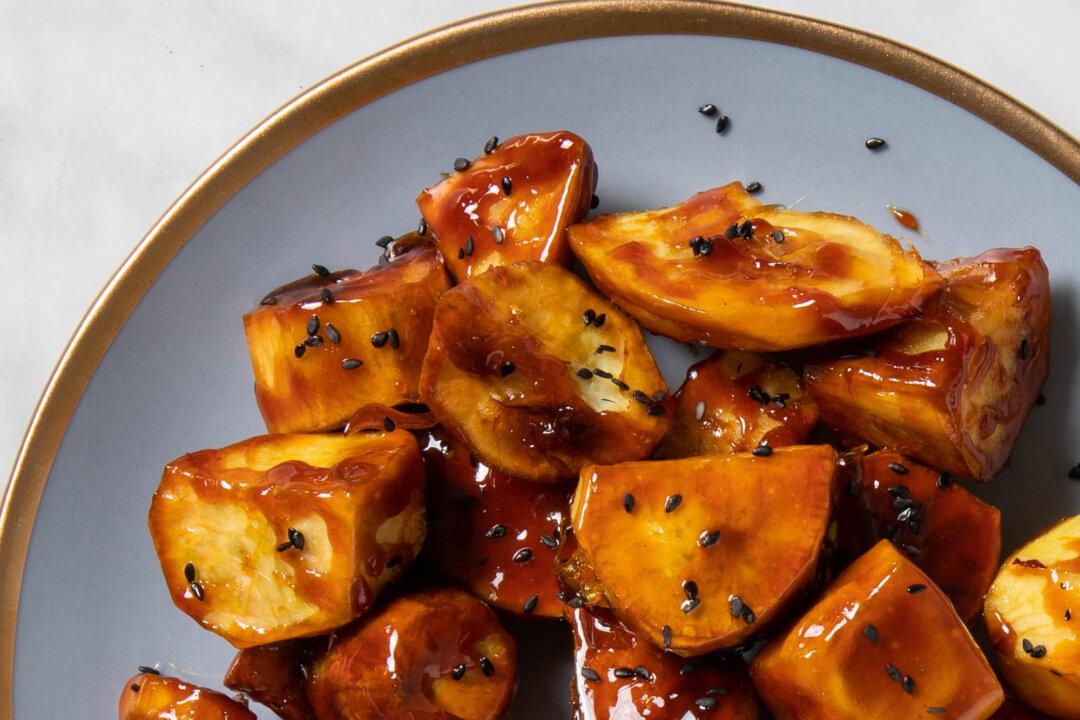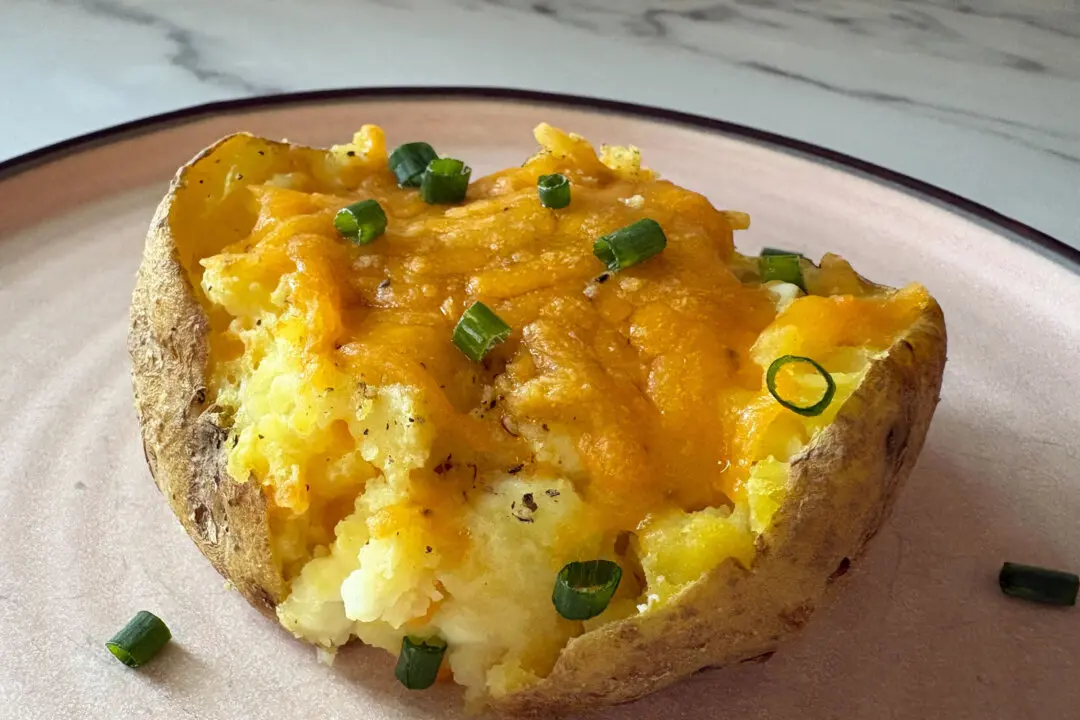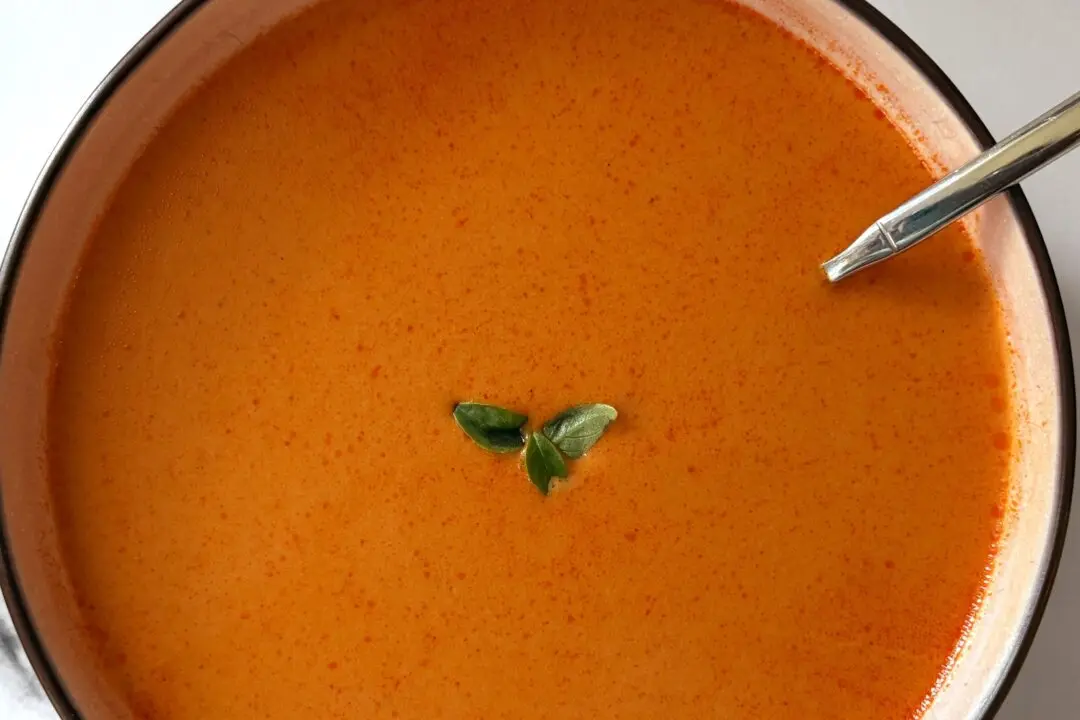You can judge a Korean-Chinese restaurant by the complimentary dessert they serve you after the meal. While sliced oranges are perfectly acceptable (who would say no to a juicy tangy palate cleanser?), I’m really impressed if they set out a little plate of goguma mattang, or candied sweet potatoes, with each piece skewered with a frilly colored toothpick so that there’s one for each customer at the table.
In this recipe, nuggets of sweet potato are deep fried, then tossed in a sugar glaze that hardens into a candy coating. When you bite into a piece, the shattering sweetness gives way to the fluffy flesh of the sweet potato, which is nutty and savory, almost like a roasted chestnut.





